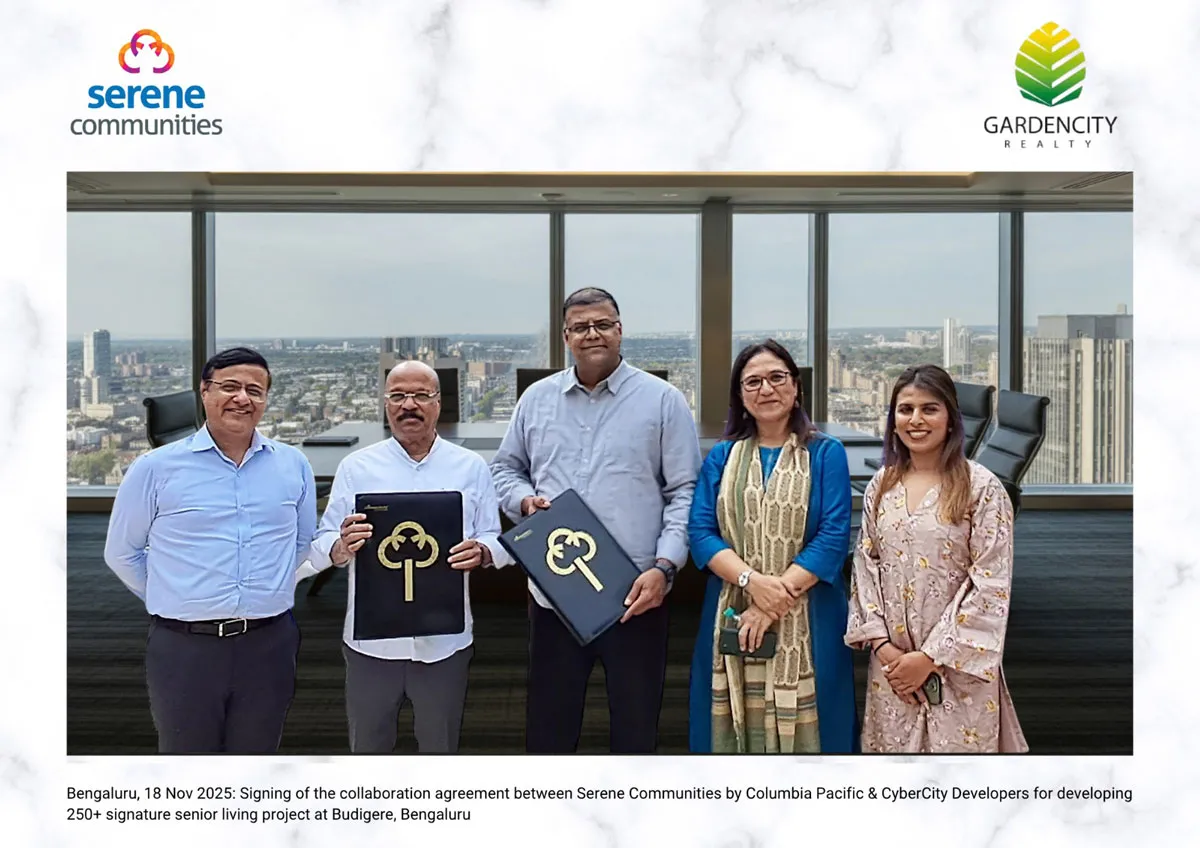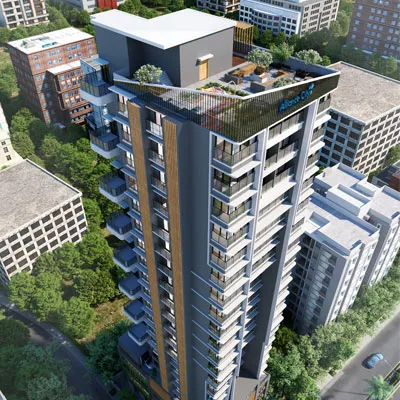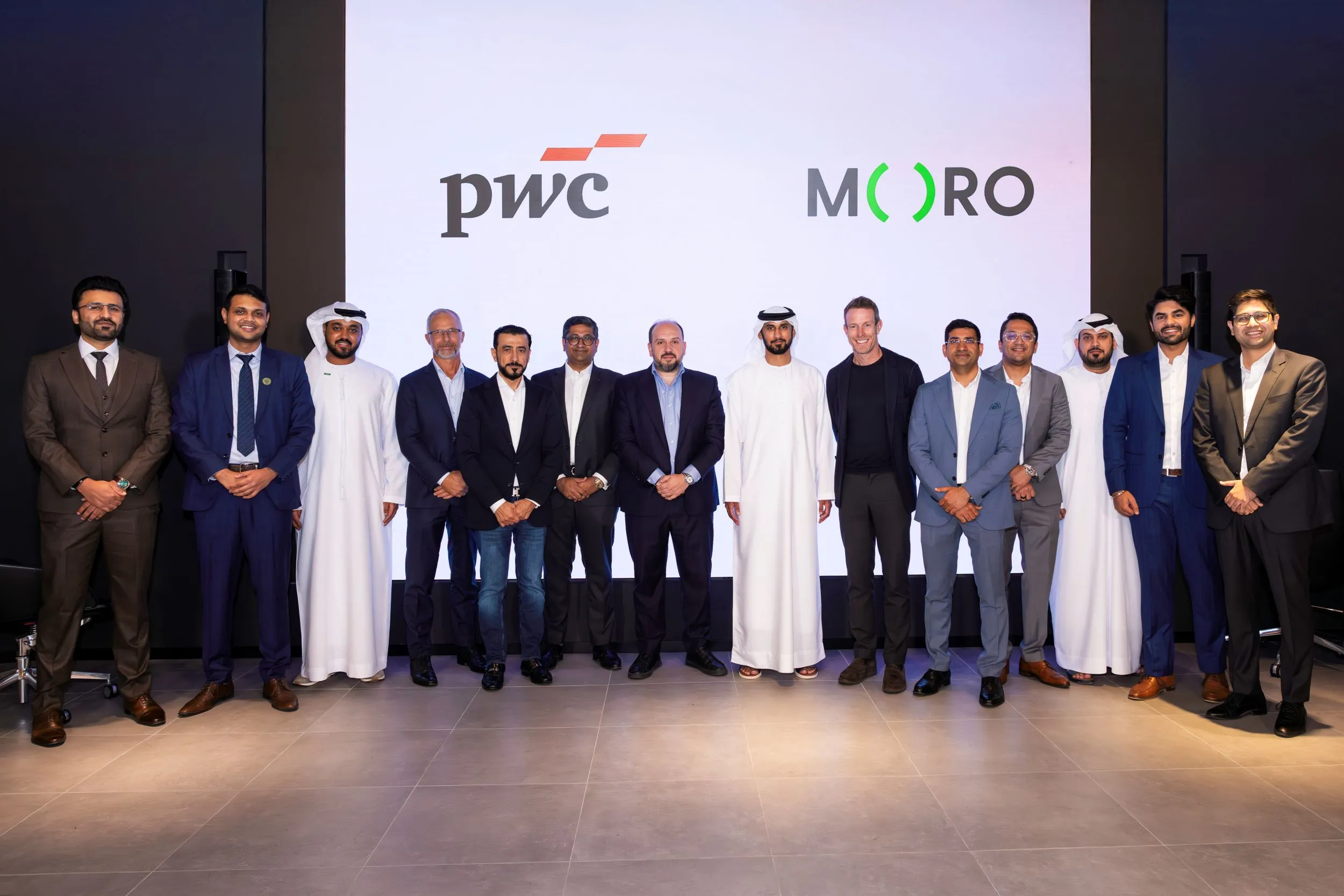With the 'Design and Build' approach fast gaining ground as an effective way of maximising time and resources, there are opportunities galore for specialised contracting services.While traditional Indian markets have been using the Design and Build (DnB) approach for long, the formalisation of ground rules have made it more organised and, thus, more lucrative for clients to approve. The approach offers a one-stop-shop solution for the client to have only a single vendor to deal with all the parts and services required for the project, thus making the integrated delivery of the project easy. Fewer touch points for the client ensure smooth and effective idea generation and implementation. “The approach also helps the DnB contractor; as a single window for the client, all design and implementation ideas are gathered on common ground and then measured and evaluated from all parametric angles to evolve into a viable final implementation idea,” points out Deben Moza, Executive Director-Head of Project Management Services, Knight Frank India. “This design liberty makes hypothesis testing for various new and innovative ideas easy for the contractor, thus easing implementation further.”In agreement, Barun Palchowdhury, Director-Design Build, Shapoorji Pallonji E&C, says, “Shapoorji Pallonji adopted the DnB mode of delivery long before it gained importance in India. If we look at our FY2018-19 order book, DnB majorly constituted 70-75 per cent of our domestic projects. This mode of project delivery ensures good synergy among all project stakeholders – from clients to OEMs – through shrewd focus on complete project understanding, thereby adding value at every stage of the project.”Better coordination with the DnB approach generates better design conceptualisation, avoiding near zero or no loss of information from how the client envisions a project and how an architect designs it. As Ashok Kularia, Managing Director, ANJ Group, says, “We started with DnB in 2008. Some of our existing clients pushed us to adopt this approach as they felt it was easy for coordination and faster and seamless execution. Since then, we have set up our own design studio and an in-house MEP monitoring team to ensure end-to-end services to our clients.”For his part, Harleen Oberoi, Senior Vice President-Head Project Management, Tata Realty & Infrastructure and Tata Housing Development Company, highlights why the DnB model of project delivery is the most favoured approach in today’s construction arena:A single entity owns the accountability of project delivery to the owner or end-users, thereby eliminating associated risks of time and cost overruns.The coordination between various agencies (designers, trade vendors, etc) associated with the project is seamless and productive.The model is technically more advanced, working on platforms like BIM, etc, which avoids reworks and contains wastage, resulting in better economies.Specialised opportunitiesBuilding projects have changed over the last decade or two, becoming more complex. And the importance of the performance and functionality of the building has only increased over the years. For example, at one stage, civil or structures contributed to 70-90 per cent of the project but now, MEP, finishes and façade contribute nearly 60-70 per cent to the project. Evidently, opportunities for support industries – now popularly referred to as specialised contracting services – such as MEP, electrical, plumbing, paints, façade works, insulation, lighting and waterproofing, among others, have expanded over time.In the item-based or general contracting (GC) mode of project delivery, in a significant number of cases, specialised contracting service providers limit themselves to their defined domain of work, owing to which the realisation of the client’s actual objective or intent was seldom possible, says Palchowdhury. “On the contrary, in DnB projects, specialised contracting service providers are absolute partners in the project who know the final intent of the project. Their value additions are accepted at every stage. So, the DnB mode of project delivery has been successful in instilling a sense of ownership among specialised contracting service providers. The mutual trust built among the project’s stakeholders has increased opportunities for all.”Moza adds, “In a DnB arrangement, the specialised service provider, instead of being only a service provider, becomes a partner in the complete design as well as the build process. The efficiencies thus achieved are amazing and maximise the possibilities of achievement in savings in cost, time and resourcing, among others.”Further, to work homogeneously with the DnB model, Oberoi tells us, various existing MEP firms have also been building up competence and capabilities to provide all MEP services under one roof (sometimes referred to as the GC model for MEP contracting), either by acquiring some trade firms or growing organically.Where the demand lies!It is perceived that real estate will witness the maximum demand in affordable and mid-size developments. So, will there be demand for specialised contracting services in these segments? Palchowdhury responds, “It is a common misconception that affordable and mid-size developments demand less specialised contracting services. Usually, these developments have a large demand (for units) within a small land parcel. In such cases, the design of the units, services, utilities and common areas play a vital role in optimising the project requirement. Also, nowadays, even affordable and mid-size segments demand similar attention to MEP services, finishes and utilities. So, there is significant demand for specialised contracting service providers in ensuring the optimal use of resources.” While a quantum of works will be in the affordable segment, according to Oberoi, there will always be demand for specialised services for delivery, may be a GC model for MEP contracting or a specialist firm for façade and fenestrations. “The modularity and value-for-money proposition these firms provide can then be adopted for affordable housing to gain economies of scale for these developments,” he adds.Expectations for 2020 Over the past two decades, specialised services have grown and have gained importance. “We have realised that not one solution fits all,” says Kularia, adding that these specialised services have added value to the end product – whether it is a light consultant to a Biophilia designer or graphic designer, they have shown their value. “And this trend will only grow into 2020 and the future.”The market often changes or makes a shift when it is driven by demand. And with an increasing number of clients deploying highly specialised professionals as managers to the projects, the market for specialised services is also asking for crucial disruptions. “Specialised services, while working in tandem with other services, have to create coordinated touchpoints for other service providers to work their parts of the work. This kind of coordinated effort could disrupt an easy workflow, but in a DnB mesh-work, this coordination is getting to the next level with every passing day.”As we move forward, the complexity of projects in terms of client demand and satisfaction is only going to rise, ensuring strong demand for specialised services. For example, Palchowdhury says, “Some upcoming projects have such complex façade, roofing and electronic systems that only a specialist service provider can deliver.” However, he also raises a concern: Owing to falling real-estate demand in some of the markets abroad, coupled with the increase in complexity in Indian projects, several international specialised contracting service providers are operating in the Indian market. Thus, one can expect stiff competition between them and local service providers within the specialised services market. That said, the demand will be able to absorb the additional supply.For his part, Oberoi outlines what the market can expect in 2020:Specialised firms will work on newer technology platforms like BIM, which will bring speed to construction with less or zero reworks.There will be less or no pain of interfacing coordination between various stakeholders in the project, which will improve quality and timelines of work and, thereby, savings in costs.End-users will gain from the special skill sets of these firms, rather than having a generalist serving them. The New Year awaits, with specialised opportunities!Specialty Trends 2020CW DESIGN BUILD connects with associations that represent various specialty contracting services as they share their expectations in the year to come.Mechanical and ElectricalRK Chugh, President, Indian Electrical & Electronics Manufacturers' Association (IEEMA)“India’s power sector is undergoing a noteworthy change and this has redefined the industry outlook. Demand for electricity is growing and many path-breaking changes are expected from the government side in coming months, particularly on the distribution side, which is directly related to real estate. With initiatives such as Housing for All and smart cities, the government is working to reduce blockages holding back growth in the infrastructure sector. All these initiatives will increase demand for electrical equipment.The electrical industry will continue to grow backed by proper industrial and sector-specific policy that will not only bring investments into the sector but transform it with the latest technologies and products. Digital and power electronics-supported technologies will prove to be a game-changer for the energy management and power sector in India. They will help the consumer take centre-stage. The smarter, more decentralised yet more connected power system will help achieve objectives like security, environmental sustainability and better asset utilisation, and open new frontiers for businesses.”PaintsMahesh Anand, President, The Indian Paint Association“Specialty contracting has been beneficial for the industry as these specialised contracting companies are well informed about the latest technologies in paints; for example, when we talk about anti-DPUR (dirt pickup resistance), a builder may not know what DPUR is, but the contractors do. When paint companies launch new technology emulsions, these contracting companies are well aware of the technologies and appreciate them. Paint contracting companies offer turnkey jobs. They directly buy from the manufacturer, so the intermediary cost is negated, and they are able to do the job at a reasonable price for the builder. These contractors also have a team of architects who can give design-specific colours that can be used.Real estate in India has drastically dropped in this fiscal owing to poor market sentiments and a liquidity crisis. Thus, demand in new painting has come down considerably but the repainting segment is still providing fodder to the decorative paint industry. Last quarter, paint companies witnessed 8-9 per cent growth, which is not seen in any of the building material segments. This growth is because repainting makes 70 per cent of the paint industry. This is expected to continue. But if we need double-digit growth, new painting also needs to flourish, which I expect in the second half of 2020. Also, eco-friendly paints have started gaining momentum.PlumbingGurmit Singh Arora, President, Indian Plumbing Association“The management of water in future will determine the ability to achieve high economic growth; and ensure food for our burgeoning population, water for hygiene and improvement in quality of lives and environmental stability. India stands at 120 out of 122 countries in terms of water quality.Implementing ‘Nal Se Jal’ for piped water for all will help us solve the problem of augmenting water supply, including treating every drop of discharged water, rainwater-harvesting the increased drawdown and refilling of aquifers, stopping pollution into our water bodies completely, creating local communities to look after water bodies around them, and managing water consumption at source.The plumbing industry’s expectations in terms of trends for 2020 are:The Government of India should set up a Bureau of Water Efficiency on similar lines as the BEE. Aerators should be distributed at subsidised rates, like BEE did for LED lighting to popularise the same and increase its usage, thereby saving 35-50 per cent of water without compromising on the comfort level of the user.The government should mandate low-flow fixtures, sanitaryware, washing machines and dishwashers as per the Water Efficient Product India Guide 2017 (WEPI), published by the Indian Plumbing Association and International Association of Plumbing and Mechanical Officials, USA.Rainwater harvesting and treatment of sewerage water should be made compulsory on a minimum sq ft or sq m ofsite area and the treated water used for flushing, gardening, cooling towers or washing of cars.We should move towards 100 per cent net-zero projects on water for all future projects in India.All plumbing should be code-based as per the Uniform Illustrated Plumbing Code of India, revised and rechristened in 2008, 2011, 2014 and 2017, published by the Indian Plumbing Association and International Association of Plumbing and Mechanical Officials, USA.HVACVikram Murthy, National President, Indian Society of Heating, Refrigerating and Air Conditioning Engineers (ISHRAE)“The Design and Build approach offers specialty contractors opportunities to get works. Also related to the HVAC industry are other services, such as mechanical, plumbing and electrical works, which are combined with HVAC by one contractor. These are called MEP services, which includes air-conditioning.This opportunity requires strong contractors who are equipped both technically and financially to deliver it. Many smaller contractors are now going out of business, because the buyer or builder prefers to deal with one organisation for engineering services. We see this opportunity growing.The real-estate market in India with relation to the HVAC industry is now particularly focused on development in the residential sector and Class-III and Class-IV cities. But the residential market in all classes of cities is good; in Class-I and Class-II cities especially, there is a good market for residential homes fully equipped with all the required services provided by the developer, which include air-conditioning. We see this part of the industry growing in demand for HVAC.HVAC trends will be in different forms of cooling, among them evaporative and radiant cooling. Radiant cooling is where the roof or walls get cold and your body heat is lost to them. These trends will be new ones, but we don’t know how quickly they will be adopted.” WeldingAV Krishnan, Past President and Life Member, Indian Welding Society (IWS), and Member, National Governing Council (NGC) “The construction industry is one of the major sectors that will impact the welding industry. This will generate good employment for welders and demand for fabrication infrastructure. There are many projections on the need for skilled welders by 2025 and beyond. While critical sectors like automotive and heavy engineering are showing slow growth, the requirements of welders and welding infrastructure in the construction industry are high.The Design and Build approach will boost welding automation technology. If there is huge standardisation, it can serve as a mass production tool for the Design and Build approach. Many corporate real-estate builders are trying to promote this. There are technologies where modules can be manufactured offline and assembled at project sites.The welding industry’s expectations are naturally for high growth in the industrial arena. While real estate would cover a small percentage of total welding requirements, areas like infrastructure, power industries, refineries, etc, will boost welding opportunities, apart from heavy engineering industries and automotive. So, all-round growth in the Indian economy leading to high growth in these areas, like it happened in the decade 2004-2014, is the expectation.”Construction ChemicalsDr BL Maheshwari, President, The Construction Chemicals Manufacturers Association (CCMA)“A major part of construction chemicals goes to infrastructure. The building segment is a bit depressed in the market right now. But with infrastructure growing well, the construction chemicals industry is doing well. Specialised services have a huge opportunity because you need trained specialised contractors to undertake specialised works for infrastructure projects such as railways, bridges and roads. Only specialised contractors understand the technologies manufactured by construction chemical manufacturers for various types of projects. Opportunities come in the form of new construction and repairs. In fact, 25-28 per cent of the construction chemicals segment business comprises repair works. In 2020, I am expecting a growth of 25 per cent for the construction chemicals industry. In terms of trends, dry mix mortar is growing fast. By 2025, India will have a huge market for everything readymade – plaster, repair mortar, flooring products, ceiling products and chemicals.”Fire-FightingKP Dominic, National President, Fire & Security Association of India (FSAI)“After China, India is the second largest country in the fire and safety sector. If Fire-Life Safety Legislation & Regulations are rigorously put into effect, India can become the main domain in the sector in coming years.The Indian fire safety systems and equipment market is projected to grow at a CAGR of 9 per cent during 2017-23. Over the past few years, demand for fire safety systems and equipment has surged owing to growing consumer awareness, which is likely to continue during the forecast period. In the overall fire safety systems and equipment market, the fire-fighting segment generated the highest revenue share, followed by fire detection and emergency and exit lighting segments.A remarkable growth in the demand for fire-fighting, detection and fire-fighter personal protection equipment is visible. Fire-fighting accounts for the largest demand within the fire safety equipment market. The increasing adoption of technologies and advanced fire protection systems in major sectors keeps accelerating the sales of fire-safety equipment in India. Rapid urbanisation in Tier-II and Tier-III cities and growth in infrastructure, retail, logistics, healthcare and hospitality, coupled with favourable industrial policies like Make in India and the Smart Cities mission, further drive the market for fire-safety products.” - SERAPHINA D’SOUZA To share your views on the upcoming opportunities in the year 2020, write in at feedback@ConstructionWorld.in




















